Physical Abilities Test
If your job offer requires a Physical Abilities Test, in your Employment Hub under the Pre-Employment Status section, you will see this status:
Physical Ability Test - Call to Schedule Appointment (example pictured below).
Before calling BTE, you must first complete the Medical Questionnaire that is part of your online registration. Only upon completion of the questionnaire will your information be sent to BTE. You must then call BTE within 48 hours to schedule your appointment. BTE can be reached toll-free at 800-206-2972. Office hours are Monday-Friday, 8:30 a.m. - 6:30 p.m. CST.
This information will briefly describe the components included within the PAT. Each test section is pictured and referenced to the job task equivalent. This is not intended as an instructional or safety manual and should in no way be interpreted as such. The test administrator will go through the instructions with you in detail at the time of the test.
Prior to beginning the testing, you will be asked to fill out a short medical history questionnaire and sign a consent form. The clinician will then take your blood pressure and your resting heart rate. Your heart rate will be monitored on a real-time basis throughout the entire test.
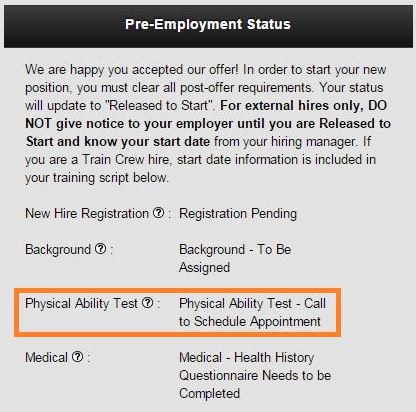
Jump to:
Preparation Reminders
Here are some important points to remember in preparation for the testing and during testing:
- Bring a valid picture ID.
- Do not take over the counter cold medications and avoid beverages containing caffeine such as energy drinks, coffee, tea, or soda pop for at least 4 hours prior to your test time. Caffeine and over the counter cold medications can raise your heart rate and/or blood pressure.
- Do not smoke cigarettes or drink alcohol for several hours before the test.
- Do maintain a regular eating schedule on the day of the test.
- Do take any regularly prescribed medication on the day of the test.
- Do wear comfortable clothing that allows good range of motion. You will be doing various tasks that include lifting, pushing, pulling etc.
- Do wear closed-toe shoes with good traction.
- Do ask questions: The test administrator will give you a full explanation and demonstration of how to perform each task. You are encouraged to ask questions if you need clarification or do not understand the test instructions.
- Do breathe normally during each task. DO NOT hold your breath.
Please review the following pictures and descriptions. This information is provided as a brief guide to introduce the test components.
Five Minute Warm-Up Exercises
This set of warm-up exercises is intended to get the applicant's muscle and joints warm and loose in preparation for the test.
Pronated Step Up
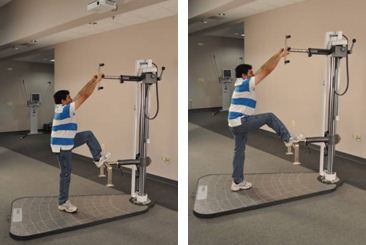
Employees are occasionally required to step up and down off the rail car throughout their shift. Applicants must demonstrate the ability to do this task in a safe manner. Applicants must step up onto the step with both feet, once leading with their left foot and once leading with their right foot.
Hand Grip
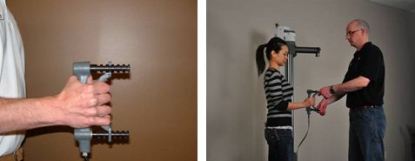
Employees are required to attach and detach the hose coupling on the train's air brake system. Applicants must demonstrate the ability to apply enough force to couple/uncouple the hose coupling by squeezinga calibrated grip device, commonly known as a grip strength test.
Cart Push
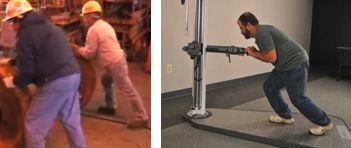
At various times during the day, employees need to push carts with supplies to other sites within the plant. Applicants must demonstrate enough force to accomplish this task. During this test, applicants will push against a handle with both hands on a testing apparatus.
Cart Pull
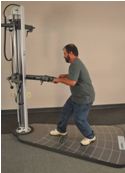
Employees must pull carts of heavy material throughout their day. Applicants must demonstrate the ability to exert enough force to accomplish this task. During this test, applicants will pull towards their bodies against handles with both hands on the testing apparatus.
Wheel Brake Pull
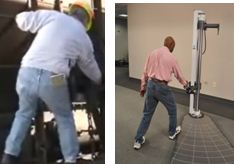
Setting the wheel brake on a train car prevents the movement of cars on a track. The ability to apply enough force to set a wheel brake must be demonstrated. During this test, applicants will pull out against a handle with their right hand on the testing apparatus.
Dynamic Lift - Floor to Waist
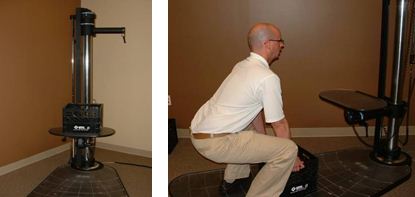
On the job, a variety of objects are lifted onto a train car. Applicants must demonstrate the ability to lift and set a progressively loaded weight to the height of a train car. During this test, applicants will be lifting a crate between a shelf and a platform.
Dynamic Lift - Waist to Over Shoulder
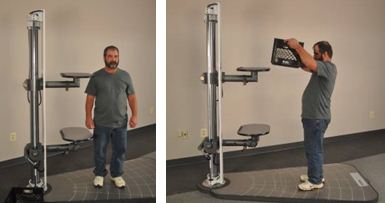
On the job, a variety of objects are lifted onto a train car. Applicants must demonstrate the ability to lift and set a progressively loaded weight to a height over their shoulder. During this test, applicants will be lifting a crate between two shelves.
Dynamic Carry
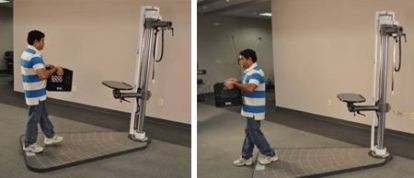
Throughout the day, employees carry a variety of objects weighing different amounts. Applicants must be able to carry heavy objects in a safe and efficient manner. During this test, applicants will be lifting and carrying a crate. Applicants will lift the crate off a shelf and carry it 10 feet, turn around, and then return the crate to the shelf.
Upper Level Reach

Employees are required to reach overhead when performing maintenance work. They may be required to work with their hands overhead for extended periods of time, with the ability to change position as needed. Applicants must demonstrate their ability to work in this position safely. During this activity, applicants will be asked to move pegs from one panel to the next panel and back for a set number of repetitions.
Kneel to Stand to Kneel
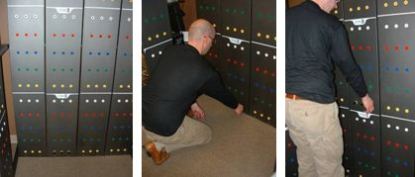
Employees are required to perform welds and other track maintenance. They often kneel for extended periods of time to accomplish these tasks. Applicants must demonstrate their ability to work in this position safely. Applicants will move pegs from the bottom row of a panel through each row to the top row and then back to the bottom row for a set number of repetitions.
Neutral Step Up
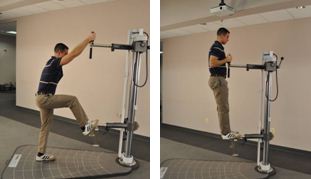
Employees are occasionally required to step up and down off a train car throughout their shift. Applicants must demonstrate the ability to do this task in a safe manner. Applicants must step up onto the step with both feet, once leading with their left foot and once leading with their right foot.
